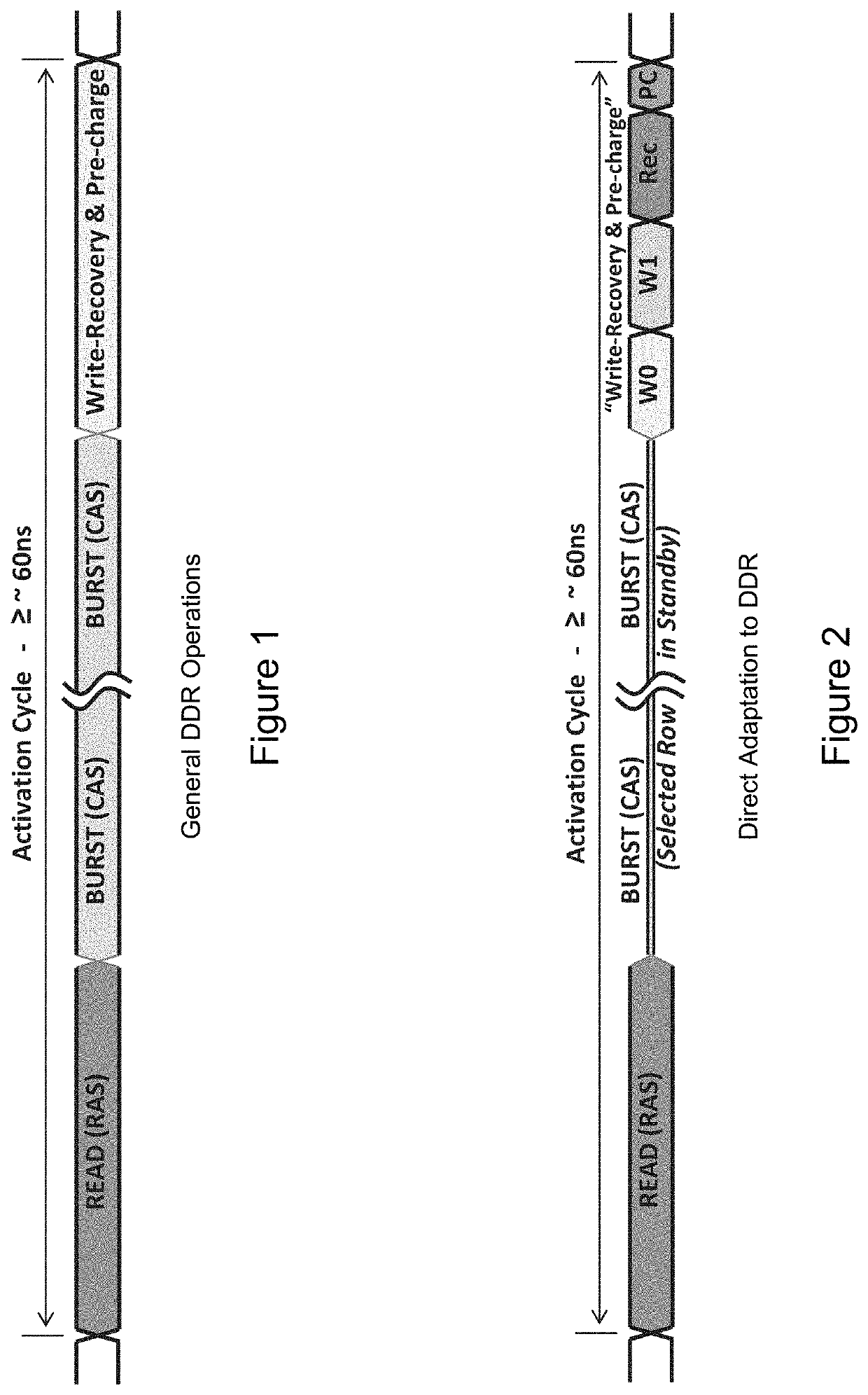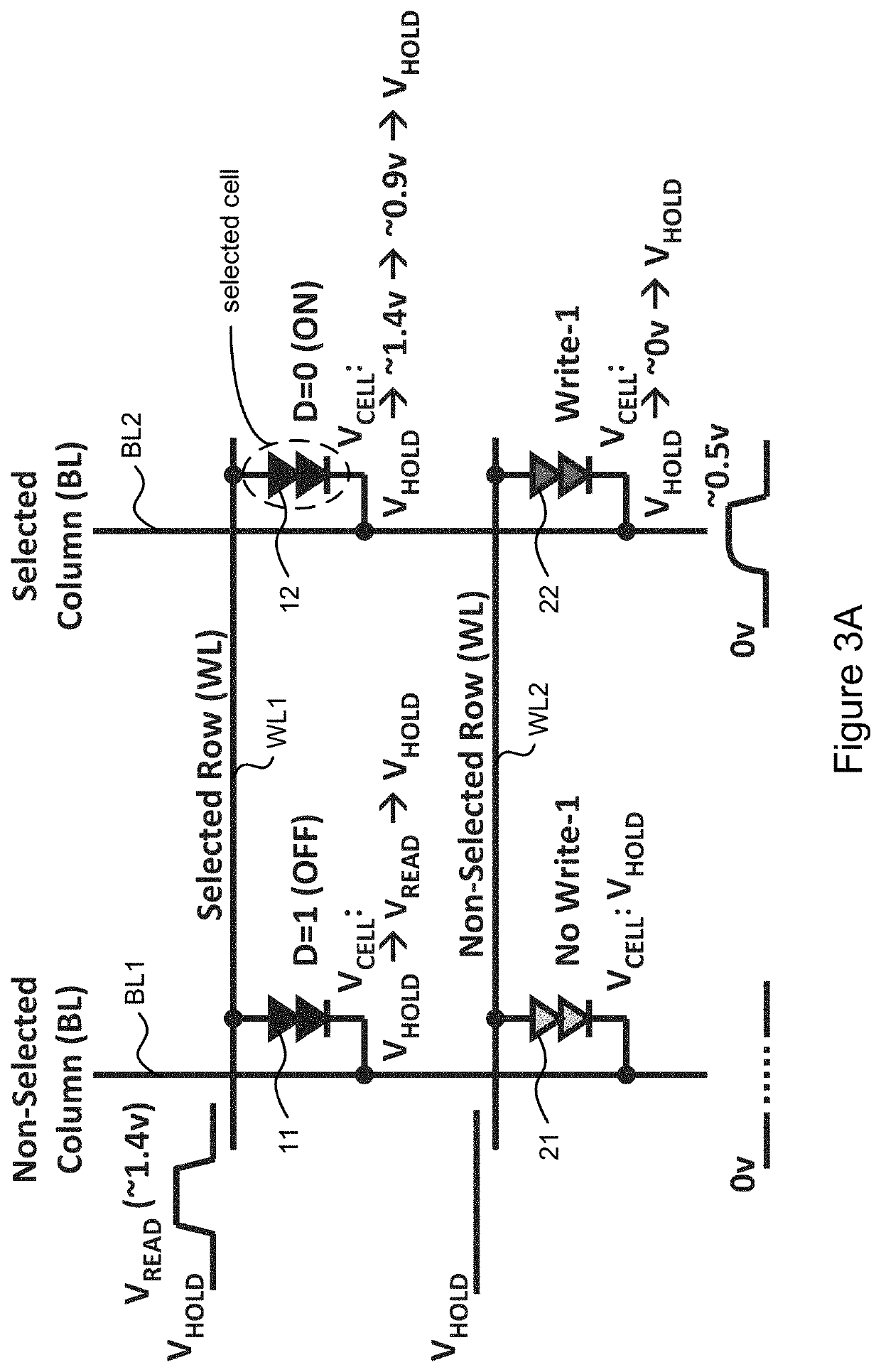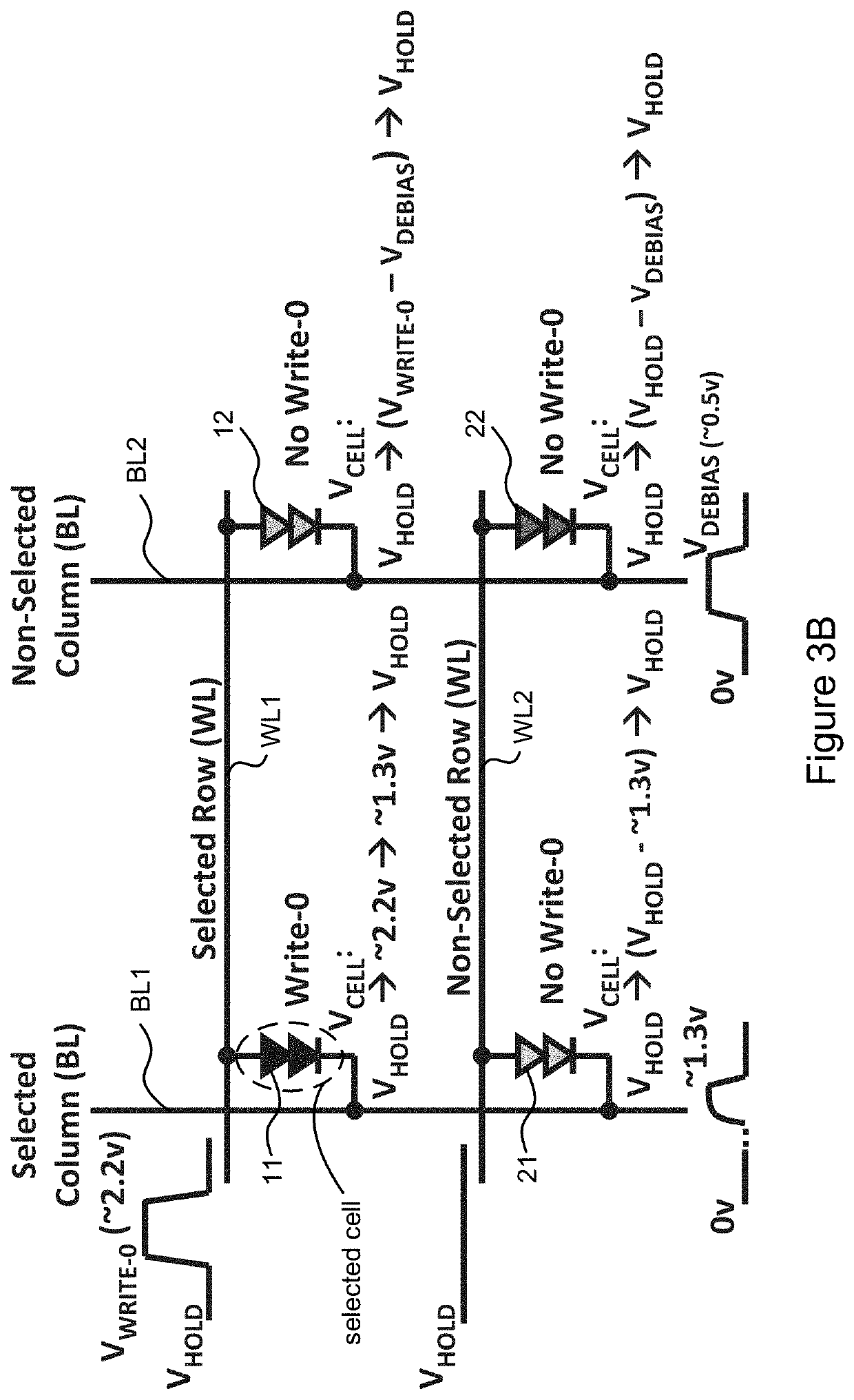High-speed data transfer periods for thyristor memory cell arrays
- Summary
- Abstract
- Description
- Claims
- Application Information
AI Technical Summary
Benefits of technology
Problems solved by technology
Method used
Image
Examples
Embodiment Construction
[0018]To best explain the present invention, DDR (DRAMs) is first generally described. This is followed by a direct approach to adapt thyristor memory cell RAMs to DDR constraints for high-speed data transfer. It should be understood that a direct approach does not mean exact imitation of DDR operations since thyristor memory cell RAMs operate differently from DRAMs as will become apparent in the description below. Finally, the present invention is described by which aspects of DDR and thyristor memory cell RAMs are optimally combined for high-speed data transfer.
[0019]Basic Operations and Periods for DDR
[0020]DDR operations are based on an activation cycle in the DRAM array. The cycle starts with a Read operation in which the contents of a selected row (a page) are read and latched. This is followed by a Burst operation in which the latched data is moved to an external location or external data is moved into the DRAM and latched. The data is moved in groups and the bursts can go on...
PUM
 Login to View More
Login to View More Abstract
Description
Claims
Application Information
 Login to View More
Login to View More - R&D
- Intellectual Property
- Life Sciences
- Materials
- Tech Scout
- Unparalleled Data Quality
- Higher Quality Content
- 60% Fewer Hallucinations
Browse by: Latest US Patents, China's latest patents, Technical Efficacy Thesaurus, Application Domain, Technology Topic, Popular Technical Reports.
© 2025 PatSnap. All rights reserved.Legal|Privacy policy|Modern Slavery Act Transparency Statement|Sitemap|About US| Contact US: help@patsnap.com



